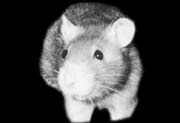A plan
Sasso met with waterfront property owners and agreed to a plan. The primary focus is to eliminate as much rat-accessible trash from the waterfront as possible.
“The whole idea is to make the environment less suitable for them to exist,” explained Sasso as he flipped through a one-inch thick series of photocopies that outline the diseases rats carry. “We want to take away their primary food sources so that they are forced to go to the bait stations.”
The bait stations contain nuts and an anti-coagulant that makes what would otherwise be a minor cut or bruise lethal to a rat. Rats can enter the stations though small two-and-a-half-inch holes in the box. Officials say that all the boxes were laid by a licensed pest control operator and that precautions have been taken to ensure that neither children nor birds can access them.
Once the rat population is diminished, the city is going to redouble its efforts to eliminate weeds and debris along the riverfront, city officials say.
Officials from the Stevens Institute of Technology said they will take pains to kill off the overgrowth next to the stairs that lead down from the campus to Sinatra Park.
“If we cleared all these places away now before we did the baiting program, we would have rats posing for pictures in the middle of the day,” said Sasso. “They would just go find somewhere else to live.”
Cass Bruton-Ward, a spokesperson for the university, said that there have been occasional rat sightings on campus in recent months.
“Our president even saw one,” she said. “We understand that the heightened activity is due to the increase in construction activity in the area. All the noise and vibration is driving them elsewhere. We are spending $85,000 to combat the problem.”
“We are fully cooperating with the health department,” she added. “We feel that it is our civic duty.” To help ensure that the rat problem does not spread to other areas, Sasso says that city residents should think about the way that they are disposing of trash. Uncovered trash cans and loose debris are the circumstances under which rats can thrive, he says.
For those who live along the waterfront – or in other areas of town that they fear may be rat-infested – the health officer recommends ensuring there is virtually no gap between the door and the floorboards. “I’m amazed at how many people leave large lips on their doors,” said Sasso. “That allows the rats to slip in. These are hot dog-shaped animals. They don’t need a lot of room. People who are in this situation can go to the hardware store and buy a drag. They don’t need a whole new door.”
Sasso also recommends that residents not leave pet food outside for their animals.
Health officials say that the waterfront is not the only part of town where rats have been spotted. “There were so many rats in a house that was slated for demolition on Paterson Road that we literally had to shovel them out,” said Sasso.
Thanks to a resolution that was sponsored by 3rd Ward Councilwoman Roseanne Andreula, the city was able to ensure that the rats that had been living under the building there did not move elsewhere once the building was destroyed. The ordinance says that the health department has to survey for rats prior to any demolition. If this were not done the rats would just move next door once their harborages were destroyed.
“I’ve seen cases where there were rat droppings on the sink – in plain view – in a home where the day before there had been no sign of rodent activity,” said Sasso. “Then you look next door and you see that the building next door was gutted.”
For more information about what to do about rats or to report a rat sighting, call the health department at 420-2375.
